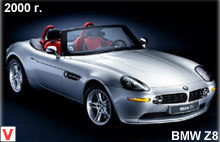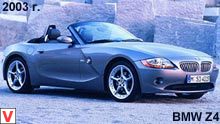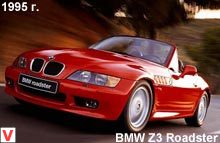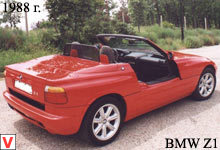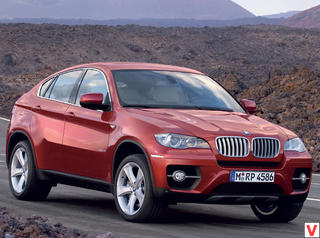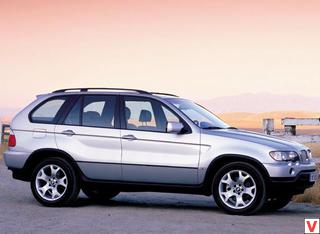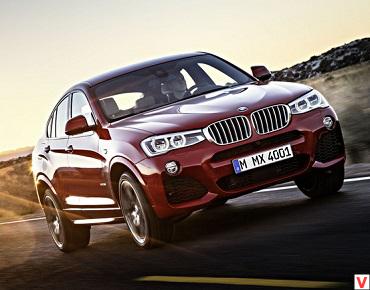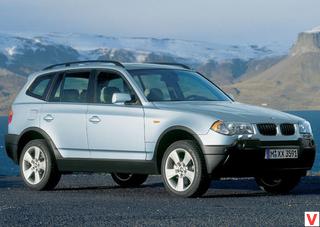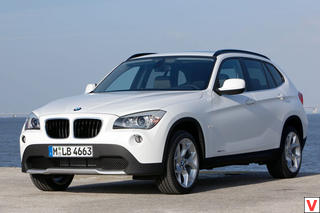
BMW 7 Series (body E23) - the first car of the executive class of the seventh series. It was first introduced near Munich in May 1977. At the presentation, the car was dubbed as “the car of the future - today.” A month later, the first cars left the assembly line. They were models 728, 730 and 733i. By the way, BMW has been working on the creation of the novelty for five years. The design was taken shortly before the E24 sport coupe appeared. Appearance of the sedan turned out pretty solid with characteristic nostrils embedded in the grille. The rear end looked overly bulky, which was offset by a huge 640-liter boot.
The E23 fully responded to the ideas of a high-class car: a spacious layout with excellent velor or tapestry anatomical seats (rarely leather), high-quality door and ceiling upholstery, good interior lighting, a traditionally comfortable driver’s layout, good visibility and a high level of sound insulation. The engines for such a large (4860x1800x1430 mm) and heavy (2050 kg) sedan were rather weak. The sixs M30-B28 inline with Solex carburetors on the 728 and M30-B30 models on the 730th developed a power of 170 and 184 hp. respectively, and the M30-B32 with the L-Jetronic injection system on models 732i and 733i - 197 horsepower.
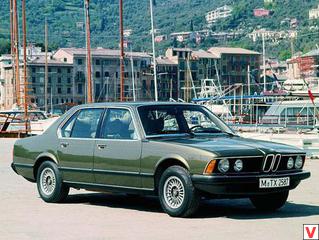
The M30-B28 engine was equipped with the same injection system a year later, but it did not add power to it. These engines were obviously not enough to compete with powerful models of Mercedes-Benz. They tried to solve the problem by releasing the flagship model of the 7th series in July 1979 - the 745i Turbo with a 3.2-liter 252-horsepower turbocharged M30-B32 / tb engine.
The maximum speed increased to 227 km / h, and the acceleration time to a hundred was 7.9 s. Two months later, the production went model 735i, which was completed with the power unit M30-B35 3.5-liter capacity of 217 hp. and its 3.4-liter modification M30-B34 of the same capacity. The latter, since May 1983, was installed on the 745i model, and its 252-strong turbo version M30-B34 / tb - on the 745i Turbo model. In 1982, the cabin was modified. The design of the dashboard and dashboard was borrowed from the E28 5-series body that had just appeared.
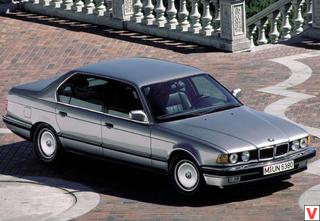
Also among the innovations should be noted the emergence of Check-control, time indicator of the TO (service indicator) and fuel flow meter. The changes also affected the suspension and design. The nostrils became less convex and no longer protruded from the grille, changed the rear lights, and the lower spoiler was extended by a plastic skirt. At the same time, the already high level of active safety was increased by equipping the disc brakes of all the wheels with the amplifier and the ABS, which, coupled with the power steering of variable effort (with decreasing action at high speed), brought the model to the position that was advanced by that time.
The second generation BMW 7-series (E32) introduced in September 1986. This generation was very different from the unlucky predecessor (E23), setting a new standard of controllability in its class. Build quality at the highest level. The cabin is very low noise.
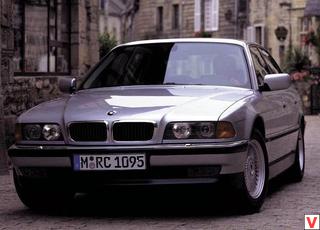
The second row offers its passengers a lot of space and comfortable seats. The instrument panel was for its time really great progress in ergonomics. Well-read devices with a variety of service sensors and pointers are located in the most favorable zone. In its predecessor, many dissimilar switches and pointers were “on the heap”, but in the new product they are somewhat spaced and evenly distributed over the entire area of the dashboard, depending on their importance.
The first-born was the 735i model with an in-line 6-cylinder 3.4-liter injection engine with 220 hp. (211 hp with a catalytic converter). In March 1987, she made her debut model 730i with a 3.0-liter 188-horsepower engine, which, like the “735th”, was completed with a 5-speed manual transmission or an automatic 4-band transmission with a torque converter. In September 1987, the 750iL version, elongated by 115 mm, was introduced, for which for the first time for machines of this class only 4-band automatic transmission was mounted.
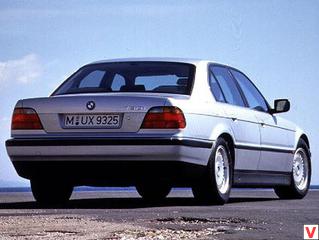
Due to the high torque (450 Nm at 4,100 rpm), the new 300-horsepower 5.0-liter VI 2 engine accelerated to 100 km / h was only 7.4 s, and the weight of the car was at least 2.3 tons. The level of active and passive safety only with time has reached the appropriate level. Since September 1989, the 750i began to install a traction control system on a paid basis.
In March 1992, the models 730i and 740i were equipped with V8 engines. All these engines are quite voracious, especially in urban traffic (from 14.9 to 17.9 l / 100 km). Maximum speed from 222 to 250 km / h depending on the engine. The large and extremely comfortable BMW 7-Series premium sedan experienced another upgrade (new E38 index) in June 1994. In 1995, the third generation of the BMW 7 Series Sedan saw the light.
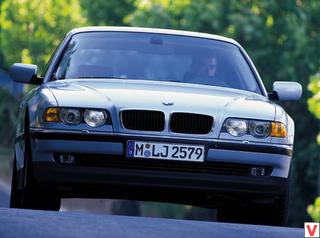
Overall dimensions are 4985 / 5125х1860х1435 mm. Exterior acquired more rapid features. The body has become more streamlined, the headlights are combined in a block with a common glass instead of the previous separate round. The company did not radically change the styling of one of its best models, but generously equipped the new generation with various electronic systems. For example, the dynamic motion control system DSC, which combines the Traction control and the navigation system (ASC + T).
Among the electronic stuffing is an adaptive automatic transmission (AGS), which allows to change the gearshift algorithm depending on driving conditions, and the ELM electronic engine control system. ECS electronically controls the stiffness of the shock absorbers. BMW 7-series has retained a unique combination of comfort, sporty dynamics and excellent handling for such a large car, which made it possible to bypass sales of the Mercedes-Benz S-klasse.
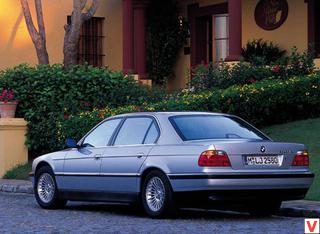
A large salon (an abundance of high-quality leather and wood finishes), in which rear passengers can even stretch and stretch their legs (especially in the IL version that is 140 mm longer), is made in a business-like style that is traditional for German manufacturers. The traditionally beautiful BMW layout of the driver’s seat (with a memory of individual seat adjustments), controls and dashboard lights make a pleasant impression with its completeness. At the same time, the car has all the necessary elements of comfort, including power accessories and climate control. Sedan features a roomy (500 l) and a very comfortable trunk with a low edge.
The options included such things as heated steering wheel rims, GPS satellite navigation system, a TV monitor and a high-end BMW top audio system with ten speakers and a CD changer for 6 discs in the trunk. An unfortunate drawback - limited rear view (due to the high head restraints of the rear row of seats) - does not seem insignificant when maneuvering in cramped urban conditions. The solution to the problem was an automated parking system, when turned on, the car itself taxied into a free parking space. The BMW 7 Series was produced in the following versions: 725tdi, 730d, 730i, 735i, 740i, 740iL, 750iL, 740iL Protection and 750iL Protection.
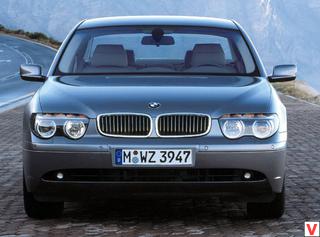
In September 1994, the model 750i with a 5.4-liter engine was offered to buyers, the power of which was brought to 326 hp. (16.8 l / 100 km in the urban cycle). From the same time, versions 740iL and 750iL with a limousine body extended by 13 cm are offered. The BMW 750iL is additionally equipped with Park Distance Control, a 5-speed automatic transmission, a self-adjusting suspension, a cell phone with voice dialing, heated by front and rear seats, an audio system consisting of 14 speakers with a power of 440 watts and aluminum discs. The ventilation system and temperature control allows you to set a different climate for the driver and passengers of the front and rear seats.
The 740iL long wheelbase sedans are offered with a 6-speed manual gearbox or a 5-band automatic transmission. Models 740iL and 750iL can be ordered in the light-armored Protection. Their body and glass can withstand the bullets of short-barreled small arms. These cars in standard equipment are equipped with safe tires, which, in the flat state, can drive up to 250 km at a speed of 80 km / h.
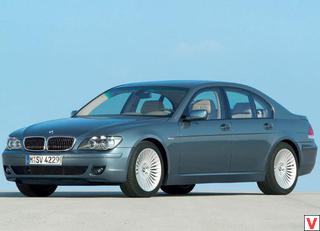
An electronic tire pressure monitoring system (TRW) can be installed on request. The BMW 7 Series was also offered with a 38 cm extension (BMW 750iXL). All extra space is provided for rear passengers. Here, of course, reigns luxury. The car has retained all the family benefits - great dynamics and control. Thanks to the flagship V12, developing 326 forces, the limousine accelerates to a hundred in about six seconds. In their smooth ride, BMW engineers found a compromise between handling and comfort.
The car is smooth enough to meet the requirements of the executive class, and is precise enough in reactions to appeal to the driver, who knows a lot about fast driving. Yes, you can drive along the direct autobahn on any of the German flagships, but only BMW, in addition, behaves perfectly on winding roads. A relatively tough suspension is difficult to “pierce”, even if you drive at high speed into a serious pothole.
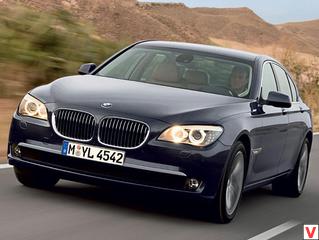
V-shaped 32-valve “eights” with a displacement of 3.0 liters (218 hp) and 4.0 liters (286 hp) on the 730i and 740i models, complemented in September 1995 by the aluminum row 2, The 8-liter “six” with a capacity of 193 hp, already in March 1996, was replaced by more fuel-efficient V8s: a 3.5-liter 235-horsepower, which in the urban cycle allows saving 1.5 l / 100 km of run, and Thus, fuel consumption does not exceed 14.2 l / 100 km, and the excellent new 4.4-liter 286-horsepower, not as economical as with excellent dynamic properties, is generally considered the main indicator of the Bavarian brand.
At the same time, for fans of saving (mainly offices, renting out cars with a driver), they mastered the 725tds model with a 2.5-liter 143-horsepower turbo diesel engine with direct injection. The appearance of the new Mercedes-Benz S-class has noticeably reduced the interest of potential buyers to this already quite old model. In 1999, a little more than 39 thousand "sevens" were collected. At the end of 2001, a new generation of cars of this series is expected, therefore in 2000 the lineup of the 7 series did not change. It should be noted only a particularly powerful diesel 740d with a new turbocharged 3.9-liter V8 direct fuel injection diesel engine with a common rail power system.
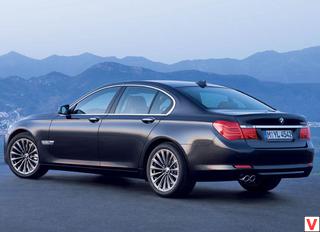
With outstanding speed performance, which provides a two-ton car power unit capacity of 245 hp, its fuel consumption (relative to the petrol model 735i) is reduced by 23%. A very high level of passive safety of the “sevens” is provided by air bags for both front and rear seat passengers. Moreover, the new Head Protection System, an inflatable umbrella that extends diagonally from the windscreen pillar to the roof above the tailgate, protects the heads of the passengers in front of them. Safety for those who are located behind provide airbags built into the door.
Also, the car is equipped with locks that block doors from opening by children, Dynamic Stability Control system and built-in sensors that automatically open doors and turn on emergency lights and lights in the cabin in case of a serious accident. In 2001, the range of "sevens" was globally updated. The basic version was released under the E65 index, and the long version of the Long received the E66 index. The car amazes with a completely new, unfamiliar interior, where there are no usual various keys and switches.
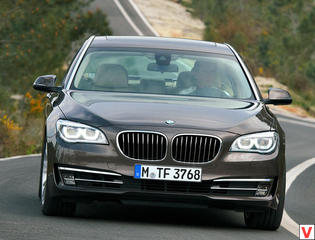
Finding itself inside the BMW E65 / E66, attention is drawn to the fact that on the spot where all the other cars have a gear lever, there is a small joystick that controls all the main functions of the car. This system, called "iDrive", was demonstrated by BMW in several show car shows, but few people assumed that it would get to the production car so quickly. Managing iDrive is pretty simple. Rotating and pressing the joystick, one of the key systems of the car is selected, whose parameters need to be learned or changed. It can be an on-board computer, a “navigator”, communication or audio systems, security systems ...
All the necessary information is displayed on a large liquid crystal display crowning the console. But how to switch gears if there is no gearshift lever? Very simple.
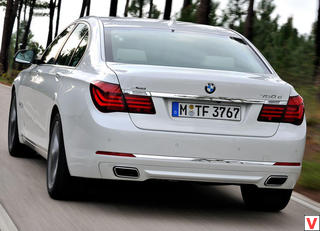
Since all the “sevens” will be equipped exclusively with six-speed “automata” (by the way, for the first time in the world installed on the production model), there is no need for switching at all. Although, if the driver wants to go into the manual control mode of the box, his services are the keys mounted in the steering wheel. And the backing is activated by a special lever on the steering column. By the way, on the new “seven” you will not find the parking brake lever. The parking brake will turn on automatically when the engine is muffled and again automatically turn off when you press the gas.
Sales of the updated “Seven” started with two eight-cylinder models “735i” and “745i”, on which, respectively, engines of 3.6 and 4.4 liters will be installed. These are engines of a completely new generation - in addition to the already well-known “Vanos” and “Valvetronic” intelligent systems, which control the change in valve timing and valve lift, they also use another fundamental innovation - the variable length of the individual intake ducts. Generous use in high-tech engines made it possible to combine the incompatible - a significant increase in power with a simultaneous reduction in fuel consumption.
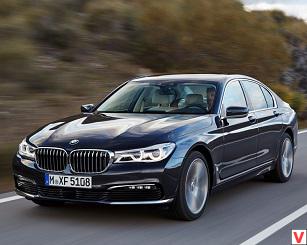
Thus, the power of the “735th” model reached 272 hp, and the “745th” —333 hp While the average fuel consumption fell to a meager for a car of this class of 10.7-10.9 liters per 100 km. A little later, there will be a 6-liter 12-cylinder engine with a capacity of 400 liters. with., and the line of eight-cylinder power units will complete the petrol model "730i" (231 hp) and a pair of diesel engines - "730d" (204 hp) and "740d" (250 hp). Aluminum alloys are used in the chassis.
In addition, the owners of the new Seven will almost forget what a body roll is in a tight corner - the new Dynamic Drive system will calculate the longitudinal and transverse accelerations every millisecond, adjusting the body position in accordance with them. In addition, third-generation shock absorbers with electronically controlled and rear axle air suspension with automatic support for a given ground clearance will appear. The main differences between the Li version are that the E66 is longer by 140 mm, and this went to his advantage: the excessive “stockiness” that was too intrusively dominant in the architecture of the short-sedan vanished.
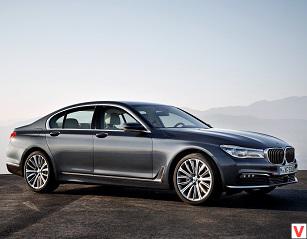
Drawing Li has clearly become more dynamic. The dynamics in the design of a representative sedan is only a consequence, the root cause of the changes in the proportions of the body is always a different philosophy of the internal space. Thus, in terms of the number of degrees of freedom of adjustments, the rear seats virtually duplicate the front, but their comfort is much higher thanks to the comfortable foot rests and all the same 140 mm “spacers” that “work” from behind. Well, also used for the first time in the world of electric side sunblinds.
BMW has taken care to ensure that a stand-alone refrigerator is located in the niche between the backs of the E66, which can also function in the winter when the air conditioner is set to heat the passenger compartment. In the spring of 2005, the BMW Group introduced an updated version of the flagship model range of the BMW 7 Series (type E65). The distinctive features of the restyled version include a new front end design with large drop-shaped headlights, a bumper with a modified air intake shape, a feed with new elongated brake lights on LED elements and a visually lightweight rear bumper.
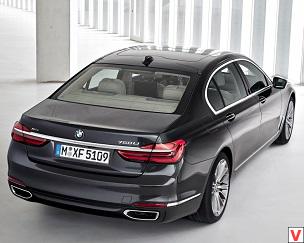
From the inconspicuous changes - increased by 20 mm hood height at the front pillars and extended to 14 mm rear track. The back part is characterized by more contoured surfaces with a new chrome strip, changed tail lights and an apron. When viewed from the side, a more pronounced edge on the threshold indicates greater sportiness and dynamism.
There are minor changes in the cabin - a new steering wheel, a redesigned interface of the iDrive system and a new controller, chrome rims on the dashboard adjustment knobs. As before, the car is assembled in two versions - the base (wheelbase 2990 mm, length 5039 mm) and elongated with the index Li (wheelbase 3128 mm, length 5179 mm). Inside, the feeling of luxury and tranquility has become even more pronounced due to the selected materials and colors. Xenon headlights and headlight washers in all models of the BMW 7 Series are included in the basic package. Adaptive headlights are available as an option.
White glass direction indicators are also included in the basic package. All BMW 7 Series now use two-stage brake lights. A significant increase in dynamic performance, made possible by a new range of engines. The model is equipped with petrol units of 3.0 l (6 cylinders in a row, 258 hp), 4.0 l (V8, 306 hp), 4.8 l (V8, 367 hp) and 6.0 liters (V12, 445 hp). All engines are characterized by high power density, wide useful speed range, high torque characteristics and moderate fuel consumption.
The introduction of an all-aluminum cylinder block, a common rail 3 system with piezoelectric fuel injection and compliance with the Euro-4 standard, thanks to an anti-particulate filter as standard, provided a real breakthrough in the technology of 7-series diesel engines. Diesels have a volume of 3.0 liters (6 cylinders in a row, 231 hp) and 4.4 liters (V8, 300 hp).
The design features of the BMW 7 Series are an electronically controlled double-lever front and multi-link rear suspension (optional and standard for Li - air suspension), Dynamic Drive active stabilizers, fully robotic ZF 6-speed automatic gearbox manufactured by ZF with a selector on the steering column, electronic parking brake, electrohydraulic power steering Servotronic. The basic package for Russia includes 10 airbags, a full set of electronic active and passive safety systems, iDrive, cruise control, leather trim, stepless door locks, heated steering wheel and seats, sunroof, memory seats, separate climate control , a TV in the rear, a hi-fi stereo system and other equipment.
Collect the car at the factory in Dingolfing. In 2008, BMW released the 5th generation of the 7 series. The base model bears the factory designation F01; the extended version with the wheelbase increased by 140 mm carries the factory index F02, denoted by L (for example, 750Li or 740Li).
The presentation of the novelty was held at the Paris Motor Show. The model has undergone multiple changes both outside and inside. Externally, the novelty is distinguished by the original protrusion on the hood and a chrome strip on the trunk lid panel.
Also changed the front and rear lights and aprons. The appearance of the model conveys the sporty character of the car, emphasizes its representativeness and elegance. Dimensions: 5072х1902х1479 mm (extended version - 5212х1902х1479 mm). This is one of the most spacious sedans in the "F" segment in height and length of the cabin. Salon immerses in an atmosphere of exclusivity, luxury and style.
The interior has been updated dramatically. Returned turned to the driver center console. The selector "machine" moved to the usual place between the front seats. As a result, the iDrive washer shifted closer to the front passenger. In addition, a scatter of keys appeared around the controller for quick access to the audio system menu, navigation, and various vehicle systems.
The new iDrive has become much easier and more logical. Now complete climate control can be done using the buttons on the console, and not wander around the intricate menu in search of air flow distribution. The controller itself only needs to be rotated and pressed, and it deviates only in four directions, and not in eight, as before. In addition, a very useful “return” button appeared, as in the Audi MMI system. The new generation of the BMW iDrive control system features high resolution graphics displayed on a 10.2-inch control display, a new menu with a single structure and ease of control of the controller.
The direct dial buttons on the controller now allow you to immediately enter the menu of audio, CD, navigation and telecommunications functions. Visual assistance functions and a consistent user guide on the display make it easy to navigate through the various menus. The car is offered with three engine options: BMW 750i, BMW 740i and BMW 730d. The line of power units is fully updated. Under the hood of the top version is now a V8 gasoline engine with double turbocharging and direct fuel injection (High Precision Injection) with 407 hp.
This is followed by a six-cylinder engine capacity of 3.0 liters capacity of 326 hp The diesel version is equipped with a six-cylinder in-line engine with turbocharging and a third-generation Common Rail injection system with a 3.0-liter capacity of 245 hp. All cars are equipped as standard with a six-speed automatic gearbox with an electronic selector and optimized shift dynamics, providing quick gear changes, increased shift comfort and reduced fuel consumption. In 2010, based on the BMW F01, the BMW ActiveHybrid 7 hybrid sedan was launched.
The power plant is a combination of a 4.4-liter gasoline V8 with twin-turbocharging (Twin Scroll technology) and an HPI direct fuel injection system and an electric motor. The total engine power is 465 liters. with., of which the electric motor accounts for 20 liters. from. (or 15 kW).
The lithium-ion battery pack is located behind the rear axle of the car, which affected the amount of luggage (460 liters in ActiveHybrid 7 vs. 500 liters in 7 series). The only gearbox available is an 8-speed automatic transmission. The body is made of steel of a new generation, which allows you to absorb the impact energy in the zones of controlled deformation and protect passengers from its effects. Active front head restraints moving forward at the time of the collision, airbags of the latest generation, three-point inertia seat belts on all seats, tires with a puncture indication system provide additional protection.
The BMW ConnectedDrive system will automatically contact the rescue service in case of an accident and report the coordinates of the vehicle. Stability on the road and smooth ride. That is how you can most accurately describe the suspension of the BMW F01. The use of aluminum in the double-lever front suspension has reduced the weight and increased stability of the car. Sculpted steering and excellent tire grip will make any maneuver safe for passengers. Thanks to the use of innovative patented technology integrated V-shaped rear axle, created specifically for the BMW 7 Series F01, excellent dynamics and the highest level of comfort are achieved.
The air suspension is included in the standard equipment of the versions with an extended base - with its help, a constant ground clearance is maintained, regardless of the load. "Long" models are also distinguished by the presence of a curtain on the rear window and chrome moldings on the roof. Dynamic Drive is available as an option. It uses in its work a multitude of sensors, with the help of which the lateral inertia forces are determined and the counteracting force necessary to maintain smoothness and stability is calculated. When cornering or a sharp rebuild, the system helps to reduce body sway and improve handling.
The fifth-generation BMW 7th series comes standard with bi-xenon headlights, including daylight, fog lamps and two-stage brake lights, 18-inch alloy wheels, dynamic cruise control, leather steering wheel with multi-function, and electric driver seat adjustment with the “ Memory ", as well as automatic two-zone climate control. Adaptive reversing headlamps with variable light distribution and a cornering light feature are available as an option.
Nearly four years after the debut of the fifth generation BMW 7-Series (F01 / F02), the Bavarian automaker has prepared an updated version of its flagship sedan, which received a number of technical and external changes, as well as a modernized interior. BMW restyled sedan 7-series 2013 model year has received new LED headlights with luminous rings, traditional for the brand, and an “elegant accent pad”. The famous "nostrils" slightly changed shape - instead of the previous 12 vertical strips, now 9.
In addition, the car got a different front bumper. A new piece of equipment has appeared along the sides - a turn indicator integrated into the lower part of the external rear-view mirror. And on the rear bumper was added chrome lining. Several innovations have appeared in the cabin, for example, new leather seats for the driver and front passenger. Optionally, you can put the rear seats, made to order for the individual requirements of the buyer. In addition, engineers have reduced the noise level in the cabin when the vehicle is moving.
There was a 1200-watt Bang & Olufsen surround sound system, and an optional entertainment system with two 9.2-inch monitors is optionally available for rear passengers. Another innovation was borrowed from the BMW 5-series F10. This is a digital dashboard offering a choice of four different variants of its design. For the driver, a multifunctional instrument display appeared behind the steering wheel, which can be customized to your own requirements. One of the most important changes was the new and completely redesigned engine options. The developers have reduced fuel consumption and the level of emissions of harmful substances into the atmosphere.
In the line of diesel engines, a new 3.0-liter six-cylinder engine with three turbines, debuting earlier on the model M550d xDrive. This 381-hp (740 Nm) engine is installed on a 750d xDrive modification, providing acceleration to a hundred in 4.9 seconds. According to the automaker, the average consumption of a sedan in the combined cycle with a new diesel engine is 6.4 liters per 100 km of track. Maximum speed is electronically limited to 250 km / h. European buyers can also purchase a novelty with more modest diesels: 730d with a 3.0-liter inline "six" with a capacity of 258 hp. and 740d with a similar engine, but with a power of 313 forces.
The basic version remains the same version of the 730i with an atmospheric petrol 3.0-liter “six” with a capacity of 258 hp. (310 Nm). With this engine sedan consumes an average of 8.6 liters per 100 km. This is followed by the 740i, which received a new 3.0-liter N55 twin-turbo engine, delivering 320 power and 450 Nm. Modification 750i boasts a 4.4-liter turbocharged V8, the efficiency of which increased from the previous 407 to 450 hp, and the peak torque increased to 650 Nm. At the same time, the average fuel consumption was reduced to 8.6 liters per 100 km.
The top version of the BMW 760i is equipped with a 12-cylinder engine with BMW TwinPower Turbo technology, direct petrol injection and variable valve timing control. 6-liter all-aluminum motor develops 544 hp power and 750 Nm of torque. The average consumption is 12.8 liters per 100 km. As for the hybrid version of the ActiveHybrid7 sedan, from now on a three-liter 320-strong inline six-cylinder petrol engine is located under its hood instead of a 4.4-liter “eight” twin-turbo with a capacity of 408 hp. Paired with an electric motor, the total output of the installation is 354 hp. and 500 Nm.
Acceleration to hundreds - 5.7 s, and consumption and emission - 6.8 l / 100 km and 158 g / km, respectively. All motors are aggregated with an 8-speed automatic transmission. In addition, features such as automatic shutdown and restart of the engine, recovery of braking energy and the second generation of driving mode switches (including ECO PRO and coasting function) have become available.
Innovations in the list of security systems - BMW night vision system and Dynamic Light Spot system with pedestrian recognition function, non-dazzling LED driving light control system, Driver Assistant Plus system with Stop & Go function, Active Protection active protection system with automatic driver fatigue recognition, and a restriction indicator speeds, including the prohibition of overtaking using the symbols of the appropriate road signs. Standard equipment includes DSC, which combines anti-lock brakes (ABS), automatic stability control (ASC), dynamic traction control (DTC), dynamic braking control (DBC) and braking control cornering (CBC).
According to the manufacturer, the new BMW 7 Series is the first car in the world equipped with an electronic shock absorber adjustment system, which individually for each wheel adapts to the appropriate quality of road surface and driving style. In addition, all rear-wheel drive versions of the "seven" for the first time will receive EPS electric power steering, which provides a supporting force using an electric motor (as standard). The prestigious sixth generation BMW 7-Series sedan 2015 - 2016 in the G11 and G12 bodies was officially introduced by the Bavarian automaker on June 10, 2015. The world debut of the model will be held as part of the 2015 autumnal motor show in Frankfurt.
As before, the car is offered on a conventional wheelbase (body G11) and elongated (body G12). The latter provides an additional 14 centimeters of body length, which entirely benefited the rear row passengers. At the heart of the machine is a new modular platform. The overall dimensions of the BMW 7-Series (body G11) increased and reach a length of 5098 mm (+19 mm), in width - 1902 mm, and in height - 1478 mm (+7 mm). Engineers also extended the front / rear track of the car by 7 mm and 4 mm, respectively.
The size of the wheelbase is preserved from its predecessor - 3070 mm in the regular version and 3210 mm in the Long version. Thanks to the use of lightweight materials in the design of the sedan, among which the carbon-fiber-reinforced plastic predominates, the total weight of the BMW 7 Series (body G11) has decreased by 130 kilograms. The roof of the sedan and its doors are made of "winged metal" (aluminum), the roof bars, the central and rear pillars, the thresholds and the central tunnel are made of composite materials. As a result, the body frame was very tough and durable. The weight distribution along the axes is ideal - 50 to 50.
For the sake of reducing the drag coefficient by 15%, engineers have developed a smooth bottom lining, a special form of rear-view mirrors, and air ducts in the front wings remove air flow from the wheel arches. Active air dampers in the grille operate in five modes. Appearance of the sedan was reviewed quite dramatically, albeit within the framework of recognizable corporate design, responding to criticism of the previous generation for excessive conservatism.
Headlights have become longer and narrower, branded "nostrils" - larger. By default, the head light is “charged” with LEDs, and optics based on lasers is provided as an option. LEDs also hid in the fog of the car.
In addition, the VI-generation sedan was equipped with new front / rear bumpers, redesigned rear lights, which are visually dissecting the chrome lining into two parts. In the area of the thresholds on the sides of the body, a metal stylish pad appeared, which transforms into small forms the air ducts of the front wings. Regarding the salon, as the manufacturer noted, the interior has become more advanced and modern.
The architecture of the front panel was left unchanged, but the material of its decoration became better, the driver would be greeted by a new steering wheel, the instrument panel (electronic) received a 3D effect and a projection display of a new generation. Both the center console and the door cards were also redrawn. Depending on the version, the interior is trimmed with Nappa or Dakota leather with wood or aluminum inserts.
The iDrive system of the new generation (now with a touch display), which has learned to understand gestures, runs the entire electronics in the cabin - a special technology allows you to control the system without even touching the monitor, for example, adjust the sound volume and answer phone calls. A smartphone holder with induction wireless charging appeared on the center console. For those buyers who intend to fully entrust the management of a personal driver and move by car only in the back row, the Executive Lounge package is provided.
It is available only for long-wheelbase modification and includes a four-zone automatic climate control, electrically adjustable rear seats with massage function, ventilation of all seats. In addition, with this package, a wider range of seat adjustments is available for rear passengers, and a passenger on the right rear can also use a footrest mounted in the front seat. The main feature of this package is an additional console in front of the rear seats, in which a folding table with cupholders and a 7-inch tablet are hidden, through which all on-board systems of the vehicle can be controlled.
Other options include a glass panoramic roof, on which a starry sky pattern is projected (available, again, only for long-base versions), a premium Bowers & Wilkins Diamond audio system with surround sound, as well as an optional Ambient Air function, which ionizes the air and flavors it with one of the eight flavors provided. In addition to the elaborated design of the car boasts a widespread introduction of information technology. Thus, the technology of remote parking will allow the car to independently drive into a parking space or into a narrow garage and leave it. The owner of the car at this time may not be in the cabin.
